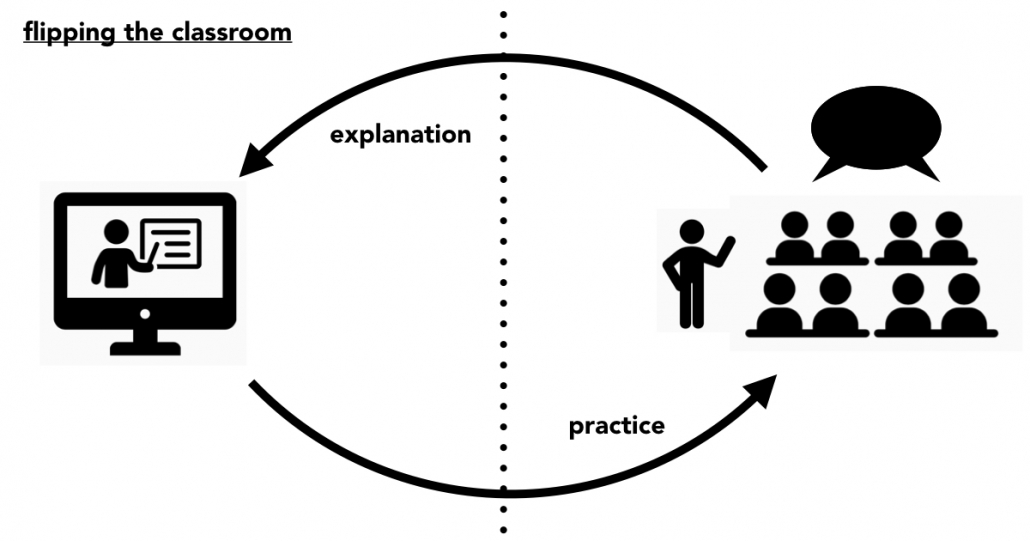What is the ‘flipped classroom’? And why is it so effective when learning a language?
This article is about our method at the Summer School / Winter School/ Virtual classrooms
In order to explain the ‘flipped classroom’, we first need to understand what the traditional way of teaching is.
What is the traditional way of teaching?
Think about your high school. Most likely, you were used to a teacher who explained everything. She/he made some notes on the whiteboard. You copied them into your notebook. And at the end of the lesson you got the homework, which was learning what was explained during the lesson, and doing some exercises to see if you understood it.
That’s, at least, how the lessons at my high school worked. Whether it was a language lesson or mathematics, it was always the same principle. I’m pretty sure you’ll recognize this, because the great majority of classroom teaching still has this format.
The two disadvantages of the traditional way of teaching
The lessons are rather one directional. They are based on information transfer from the teacher to the student. And after hours of new information, you simply get tired, you get bored and you might not absorb everything.
And when do questions occur to you? Of course, when you’re doing the homework! That’s when you come to the conclusion that something is unclear in your notes, or that you don’t understand the exercises. And that’s the moment when the teacher is not there.
The flipped classroom
What if we did it the other way around? Is it really necessary that the teacher ‘transfers’ the information in person? Or are there other ways to do that? And if we are learning a skill (like a language)… wouldn’t it be more effective to use the time in the classroom as much as possible for practising.
Well. The flipped classroom principle is a way of blended learning. And blended learning is a combination of e-learning and a real classroom.

Why would we not move the whole explanation part to the e-learning part using video? After all, it’s one directional, so we can record it. And the student can just watch it, even more than once. If you watch the videos BEFORE going to the classroom, we can use the time in the classroom to practise.
For practising we really need each other! That’s the added value of having a teacher. That’s the added value of having fellow students. Especially when you are learning a language, it’s all about interaction! And it’s all about learning a skill. We simply need to do it, to be able to use it.
When is the traditional way of teaching successful?
With the traditional way of teaching, there are quite a lot of factors that all need to be right in order to have a successful lesson. Again, remember your high school! Which one of your teachers was your favourite?
Most likely, it was a highly talented narrator, who prepared the lessons well, who found creative ways to explain certain principles, who made you interact during the lesson, and who had a sense of humour, too. So, I think you would agree with me that the traditional teaching style is very dependent on the teacher.
Is video tuition effective?
A lot people have the perception that video is less effective than having a real person in front of them. As I have been selling language courses my whole professional life, I can confirm that it’s often easier to sell a 500 euro course with a teacher than a video course that costs 50 euros. Simply because people are used to learning in a classroom with a teacher.
But why would video tuition not be able to compete with a real teacher if we are talking about the explanation? Please think. A good teacher who takes his job very seriously, spends about half an hour to prepare one hour of class. Now compare: I spend 15-20 hours to make just 5-10 minutes of video, and I hire other teachers, I hire proofreaders, we have discussions; we evaluate different versions of lessons, and I spend a lot of time on the format and the narration, I use animation to create a better understanding, I add captions, I add subtitles in other languages… Should I continue? It’s not a question of whether the video can compete with a real teacher. It’s a question of how a real teacher, with limited time for preparation, is going to explain something better than a video with 15-20 hours of work in it.
And there is one other reason why I believe video is better for explanations. With video it’s much easier to split up the tuition time into small portions of 5-10 minutes. As I mentioned before, it’s very difficult to keep students concentrating during a lecture that takes hours. But if you break it up into short sessions, and you teach one thing at a time, then it’s much easier for the student to absorb and to keep concentration. And it’s more likely that he or she will understand and remember it.
The effect of the video on the real classroom
If you move the explanation part to the videos which then becomes the homework, and if all the students come prepared (having watched the videos) to class… then you have a lot of time available to practise what you’ve learned!
It’s not about ‘just listening’ anymore. It’s not only the teacher who is speaking. It’s about doing and interacting. Converting theoretical knowledge into active skills. The class is not only more interactive… it’s also a much easier format to spend a longer time in class without getting bored!
Side effects
At the Dutch Summer/Winter School, we switched to the flipped classroom in 2017. And we noticed two important side effects. We saw that people were a lot more disciplined about doing the homework (e-learning). And that’s logical, because you really need to come to class prepared. It makes no sense to practise what you have notlearned. And in a group course, where fellow students need to practise with you, you don’t want to underperform!
We also noticed that the ratings of teachers improved. At the Summer School we have intensive courses, so sessions of 3-4 hours per day, and that is day after day for 2 weeks or more. I mentioned above the critical success factors for the traditional style of teaching. Now for sure, I really do have a team of extremely talented teachers. But it’s quite a job to keep the attention span if the course is so intensive. The challenge to keep people engaged is a lot easier when there is less explanation, and more interaction.
How do we implement the flipped classroom?
The students at our Dutch Summer/Winter school have the following homework:
1. watching #dutchgrammar videos, and doing online exercises
2. learning the vocabulary (related to a certain theme, like for example: the doctor)
3. watching ‘Heb je zin?’ soap opera episodes (with 1. the same grammar and 2. the vocabulary in real conversations)
All three elements of the homework are related to the next lesson. We want all our lessons to be efficient, including the first one! So even before the first lesson, there is some homework to do that we send beforehand.
When the students come to class they are prepared. The class itself is a mix of many different interactive formats that are all focused on practising what was taught in the videos. These interactive formats are NOT what the teacher prepared the night before. We worked it all out beforehand with a team of teachers. It’s a result of many years of teaching experience of different teachers combined. We’ve tested it thoroughly, so the current lessons are a selection of formats that we have tried and found worked out best with our students.
Conclusion
Is a real teacher helpful when learning a language? Absolutely! But where can the teacher add the most value?
There, where you need interaction! You can teach anything in a video but for interaction you need each other and if you’re learning a skill, then you simply need to practice doing it.
The flipped classroom allows the lessons to be very interactive. The teacher can focus on conversation exercises, providing feedback, answering questions, role plays, games, challenging certain students more, while giving other students extra help, creating an environment where people are not afraid to talk, building a team spirit.
I’m an engineer myself by education. And as an engineer you focus on efficiency and effectiveness. To do the things that work best. And to do them in the best possible way. The flipped classroom works and it was a major improvement in the quality of our program.
It’s not just my opinion. Our students love it! It’s one of the factors that people mention straight away if I ask them what they liked about our program.
Everybody at our Dutch Summer/Winter School made the decision to do this course, after finding us online. We don’t get subsidies, we don’t have sales managers who are closing corporate deals. Most of our students pay for the course themselves. So our students are also our customers.
We are dependent on happy customers who come back to do the next level and who tell their friends about us. A student is happy when he/she has learned a lot in a short time. A student is happy when he/she liked the way of learning. And a language student in particular is happy if she/he was able to speak a lot!
Thank you, flipped classroom!
Would you like to learn Dutch with a method based on the flipped classroom principle?
Join the Dutch Summer School, the Dutch Winter School or our Virtual classrooms

Bart de Pau
online Dutch teacher & founder of the Dutch Summer School & Dutch Winter School



